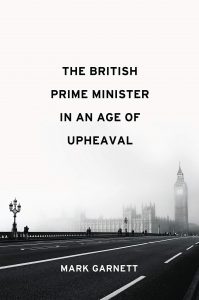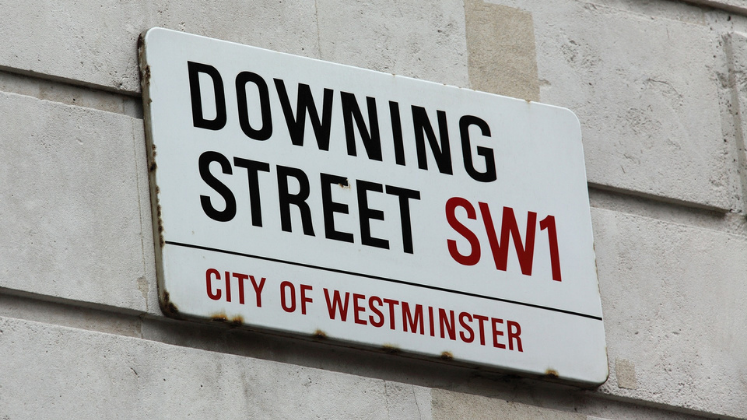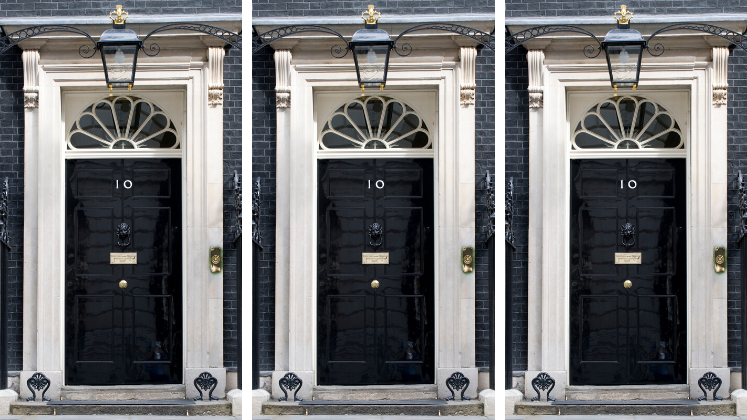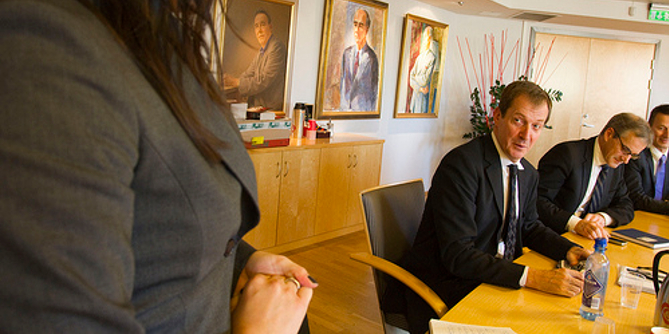In The British Prime Minister in an Age of Upheaval, Mark Garnett explores the role of the British Prime Minister post-1979, offering insightful characterisations of modern British Prime Ministers and providing a political history of the office. This accessible and engaging book is a very worthwhile contribution to the literature on the British Prime Ministership and will be of interest to anyone studying political leadership and British parliamentary politics, writes Chris Featherstone.
The British Prime Minister in an Age of Upheaval. Mark Garnett. Polity. 2021.
 Find this book (affiliate link):
Find this book (affiliate link): ![]()
The British Prime Minister in an Age of Upheaval is a book that is particularly well-timed to contemporary UK politics as Mark Garnett explores the role of the British Prime Minister. In a book that provides insightful characterisations of every post-1979 Prime Minister from Margaret Thatcher to Boris Johnson, Garnett questions and engages with the office of Prime Minister. What is the role of the PM? Is the role necessarily flawed to the point of impossibility? Garnett argues that ‘unless the prime ministerial role is reconsidered’ (13), the position of Prime Minister is unfit to deal with the issues that are confronting the UK.
This book moves away from debates over the core executive and presidentialism in considering the role of the UK Prime Minister, instead arguing that the prominence of the PM is a key dynamic that is under-scrutinised. Written in a very accessible way, the structure of the book is both thematic and chronological, meaning that it is also an insightful political history of the role of the Prime Minister post-1979. It is also timely in how up-to-date this work is, having been completed in November 2020.
Garnett’s characterisation of the role of PM is split into six areas: majority leader; cabinet-maker; policy-maker; communicator-in-chief; speaker for Britain; and election winner. ‘Majority leader’ refers to the relations between the Prime Minister and the House of Commons, and the Prime Minister’s role as leader of the majority party in the Commons. ‘Cabinet-maker’ refers to the process by which the Prime Minster sets out the ‘final team-sheet’ (49), allocating positions in cabinet to available personnel. Garnett argues this reflects both the Prime Minister’s view on available people and the political context.
The ‘policy-maker’ chapter scrutinises the ‘“hollowing out’’ of the British policy-making process’ (76), focusing on the Home Office. ‘Communicator-in-chief’ refers to the relationship between the Prime Minister and the media, while the ‘speaker for Britain’ classification refers to the Prime Minister’s role in representing Britain. The chapter on the ‘election winner’ classification analyses the Prime Minister’s role in achieving electoral success.

Image by PublicDomainPictures from Pixabay
Garnett presents a useful means of categorising the role of the Prime Minister, and a framework for assessing how particular Prime Ministers have performed this role. Equally, the framework that Garnett uses means that the reader can easily focus on a specific aspect of the role of PM, making this a useful reference book. In scrutinising the role of the Prime Minister in relation to the House of Commons, the cabinet, policy, media representation, the presentation of Britain internally and externally and elections, there are some areas that Garnett does not cover by his own admission, such as prerogative powers, devolution and the deployment of nuclear weapons. These are disappointingly dismissed off-hand, with the limited justification that they can be covered by ‘other scholars’ (13). A brief engagement with these topics, or a greater explanation of the reasons why these topics were not incorporated, would have been an interesting development for this work.
This book can also be read as a political history of the role of the British Prime Minister from 1979. The reader is taken through complex issues such as the ’hollowing out’ of government ministries with clarity and ease. Each chapter proceeds chronologically, and each is littered with anecdotes and stories from the premierships of every PM from Thatcher to Johnson. These stories, drawn from academic works and memoirs, make every chapter accessible to readers from a general audience to students and academics. They also inform many of the insightful characterisations that Garnett makes of different Prime Ministers’ styles, such as his observation that ‘[David] Cameron was a ‘‘mood music’’ man rather than a policy entrepreneur’ (118), or that ‘[Theresa] May’s sense of public duty was palpable and almost painful’ (231).
However, this book is intended to be more than a political history. Contextualising the modern Prime Minister, Garnett argues that political prominence is a zero-sum game for the Prime Minister and other government ministers. The more attention the Prime Minister receives, the less prominence is available for other ministers, and this is despite ministers having a greater contribution to governance in Garnett’s view.
This argument that the key under-scrutinised dynamic of the role of the UK Prime Minister is prominence is an interesting one. However, a more explicit exploration of this would be beneficial. Despite writing on prominence, Garnett’s argument is not particularly prominent throughout the book. The argument is given a paragraph or two in the introduction, and is then rarely explicitly referred to in the main body of the text. Given that the book is written accessibly with witty comments throughout making each chapter very readable, the under-playing of the argument is a little disappointing. A direct link for each chapter that differentiates Garnett’s argument from previous conceptualisations would be a useful addition to the work.
This book constitutes a very worthwhile contribution to the literature on the British Prime Ministership. Anyone who is interested in political leadership in the UK, parliamentary politics and British party politics would benefit from reading this pithy and insightful book. It may be Garnett’s final paragraph that offers his most perceptive insight into the problems in the role of Prime Minister:
the role of the Prime Minister is now characterised by excessive political prominence, rather than power in any constructive sense. It is both a symptom, and a significant cause, of a dysfunctional system of government: a serious nuisance which should be abated in the interests of the unfortunate individuals who seek the role of governing a fast-fracturing country (251).
For undergraduates, the book outlines the role of the British Prime Minster, demonstrating how each part of the role – majority leader, cabinet-maker, policy-maker, communicator-in-chief, speaker for Britain and election winner – can impact the others. For a postgraduate student, this book is a repository of anecdotes to be called upon to support their own arguments. The book is also written in a way that is accessible to a general audience as well as speaking to undergraduates, postgraduates and academic researchers.
Note: This review gives the views of the author, and not the position of the LSE Review of Books blog, or of the London School of Economics and Political Science. The LSE RB blog may receive a small commission if you choose to make a purchase through the above Amazon affiliate link. This is entirely independent of the coverage of the book on LSE Review of Books.







